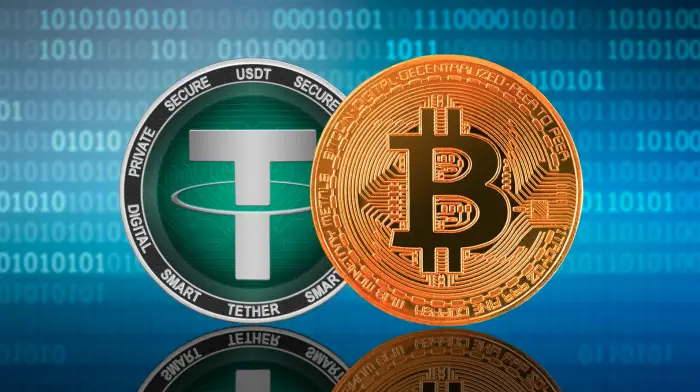📖 Table of Contents
- Bitcoin vs Stablecoin Debate ⚖️
- What is Bitcoin? 🤔
- What is a Stablecoin? 💵
- Bitcoin vs Stablecoins: Key Differences 🔑
- Why Stablecoins Are Becoming Popular Over Bitcoin ⁉️
- The Future of Stablecoins 🚀
- How to HODL and Trade BTC and Stablecoins with Ledger Wallet 🔒
- FAQ: Will Stablecoins Replace Bitcoin? ❓
- Conclusion: The Verdict on Bitcoin vs Stablecoins 🔎
Bitcoin vs Stablecoin Debate ⚖️
The cryptocurrency world thrives on innovation, competition, and bold predictions. One debate dominating crypto circles is will stablecoins replace Bitcoin? While BTC is the first cryptocurrency and the king of decentralization, stablecoins offer a stable alternative. So, which will dominate in the future? Let’s break it down.
What is Bitcoin? 🤔
Bitcoin (BTC) is the original cryptocurrency, launched in 2009 by an anonymous entity known as Satoshi Nakamoto. Its decentralized nature eliminates the need for intermediaries like banks. Often referred to as “digital gold,” Bitcoin is prized for its scarcity and use as a store of value.
Key Features:
- Decentralized: Operates on blockchain technology without central authority.
- Finite Supply: Capped at 21 million coins.
- Volatile: Prices can swing dramatically due to market demand.
Did you know? Bitcoin was once traded for less than $1. Today, its price regularly exceeds $30,000!
Advertisement
Join Gemini today and get $15 in free Bitcoin when you trade with an easy, secure and U.S.-regulated crypto exchange you can trust. Offer valid for U.S. residents only; crypto investments are risky.
What is a Stablecoin? 💵
Stablecoins are cryptocurrencies designed to maintain a stable value. Typically pegged to a fiat currency like the US Dollar (e.g., USDT, USDC), stablecoins provide the best of both worlds: the efficiency of crypto and the stability of traditional money.
Popular Types:
- Fiat-Collateralized Stablecoins: Backed by reserves of fiat currency (e.g., USDT, USDC).
- Crypto-Collateralized Stablecoins: Secured by other cryptocurrencies (e.g., DAI).
- Algorithmic Stablecoins: Use smart contracts to manage supply and demand.
Did you know? Stablecoins like Tether (USDT) and USD Coin (USDC) consistently rank among the top 10 cryptocurrencies by market capitalization!
Ripple’s Stablecoin (RLUSD)
RLUSD is Ripple’s fiat-backed stablecoin designed to integrate seamlessly into RippleNet. Its focus is on efficient cross-border payments while maintaining regulatory compliance. Ripple’s stablecoin leverages Ripple’s growing infrastructure and partnerships, making it a game-changer for financial institutions.
Did you know? Ripple is already a key player in CBDC development, which could amplify RLUSD’s adoption!
Bitcoin vs Stablecoins: Key Differences 🔑
| Feature | Bitcoin | Stablecoins |
|---|---|---|
| Purpose | Store of value, investment | Stability, transaction medium |
| Volatility | High | Low |
| Supply | Finite (21 million) | Potentially unlimited |
| Decentralization | Fully decentralized | Varies by issuer |
| Adoption Use Case | Digital gold | Everyday transactions |
While Bitcoin attracts long-term investors, stablecoins are often used for day-to-day payments, hedging, and quick transfers between exchanges.
Why Stablecoins Are Becoming Popular Over Bitcoin ⁉️
1. Stability for Transactions
Bitcoin’s price volatility makes it less appealing for merchants. Stablecoins solve this problem, ensuring value stability during transactions.
2. Seamless Trading Pairs
Stablecoins are widely used in trading pairs on exchanges, enabling quick switches between assets without exposure to market fluctuations.
3. Cross-Border Payments
Stablecoins allow cheaper, faster international transfers compared to fiat and Bitcoin.
Did you know? Stablecoins accounted for over 80% of trading volume on crypto exchanges in 2024!
The Future of Stablecoins 🚀
The future of stablecoins looks bright as governments explore Central Bank Digital Currencies (CBDCs) and businesses adopt stablecoins for transactions. However, regulation and competition may shape their evolution.
Will stablecoins replace Bitcoin? Not entirely. While stablecoins excel in utility, Bitcoin remains unrivaled as a store of value. Both have their unique niches in the crypto ecosystem.
How to HODL and Trade BTC and Stablecoins with Ledger Wallet 🔒
Using a Ledger wallet, you can securely store and manage both Bitcoin and stablecoins.
Steps to Get Started:
- Set Up Your Ledger Wallet: Install Ledger Live and set up your device.
- Buy Bitcoin and Stablecoins: Use integrated exchange partners to purchase crypto.
- Trade and Earn: Swap Bitcoin for stablecoins or stake stablecoins for passive income.
Did you know? Ledger wallets now support over 5,500 cryptocurrencies, making it a one-stop shop for hodlers and traders alike.
FAQ: Will Stablecoins Replace Bitcoin? ❓
1. Can stablecoins completely replace Bitcoin?
Not likely. Bitcoin’s scarcity and decentralized nature make it a unique store of value. Stablecoins are better suited for transactions.
2. Are stablecoins safer than Bitcoin?
Stablecoins offer stability but rely on central entities or algorithms, which introduces risks different from Bitcoin’s decentralized model.
3. Has Bitcoin ever been replaced by another crypto?
Despite competition, Bitcoin has maintained its dominance due to its first-mover advantage and widespread adoption.
Conclusion: The Verdict on Bitcoin vs Stablecoins 🔎
So, will stablecoins replace Bitcoin? Probably not. While stablecoins are fantastic for transactions and everyday use, Bitcoin remains the go-to for long-term value storage and decentralized finance. Both play vital roles in the ever-evolving crypto space. As an investor, understanding their strengths will help you navigate the market confidently.



